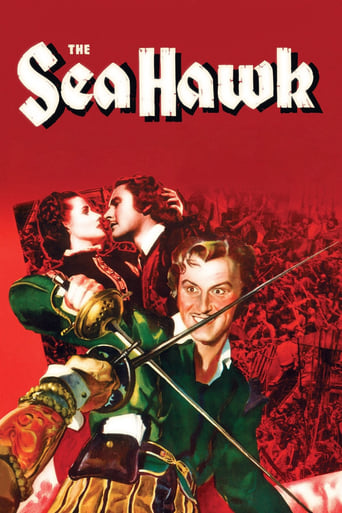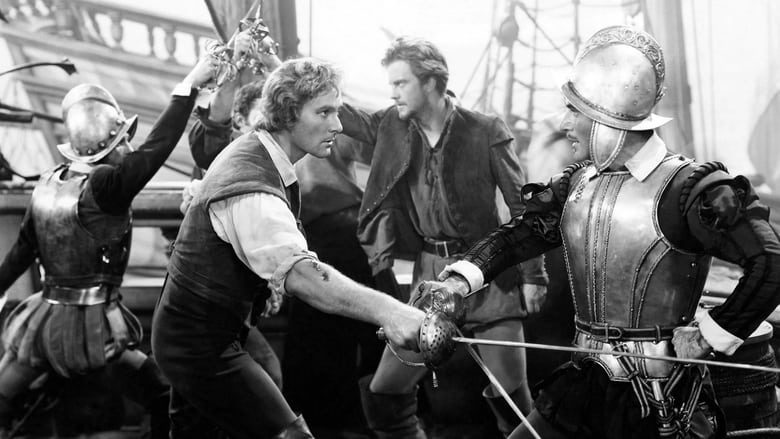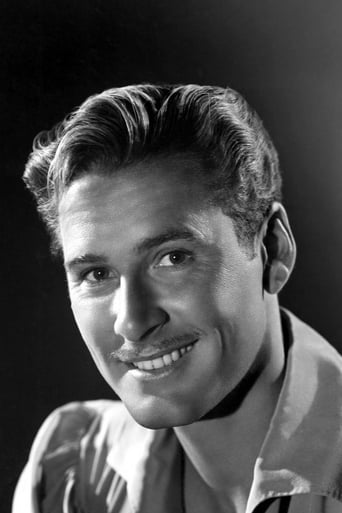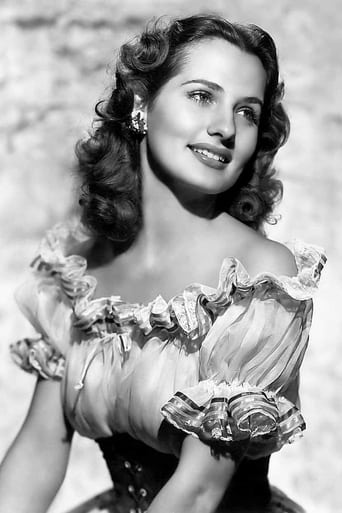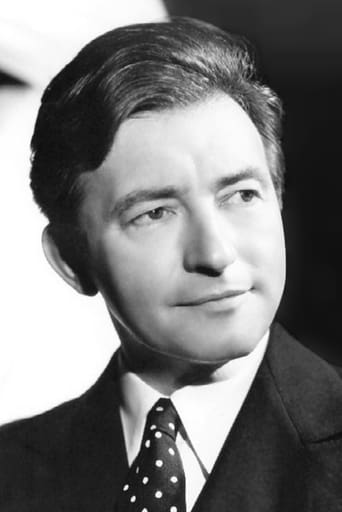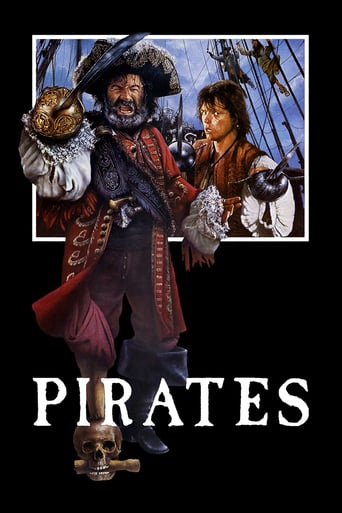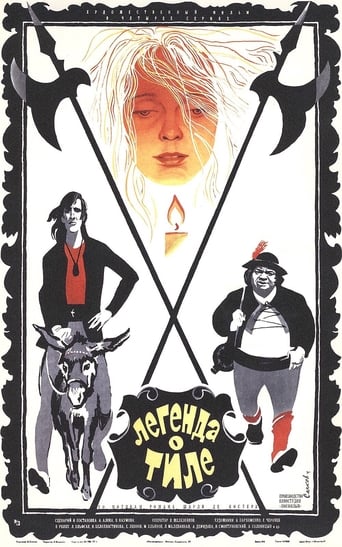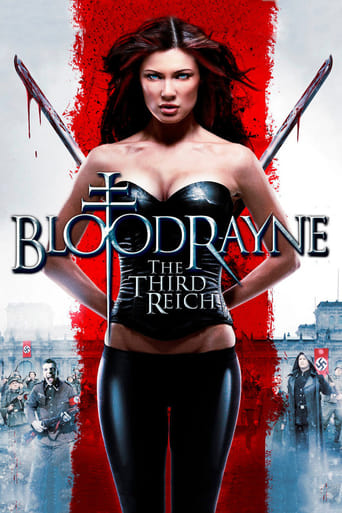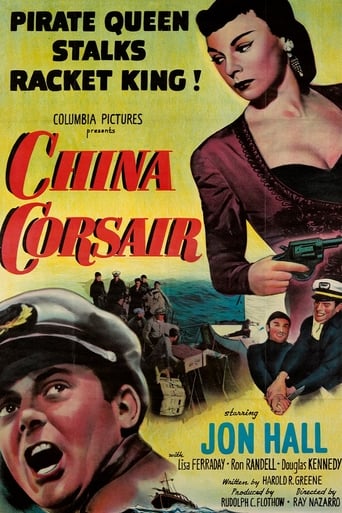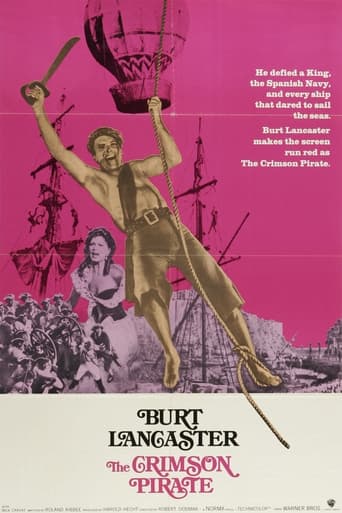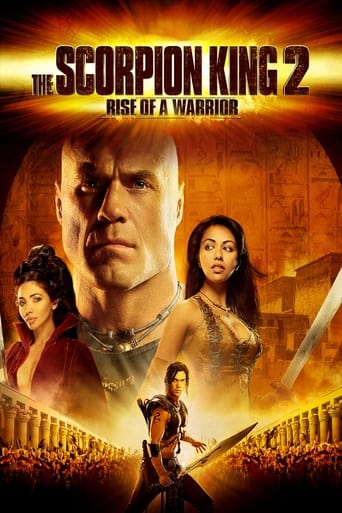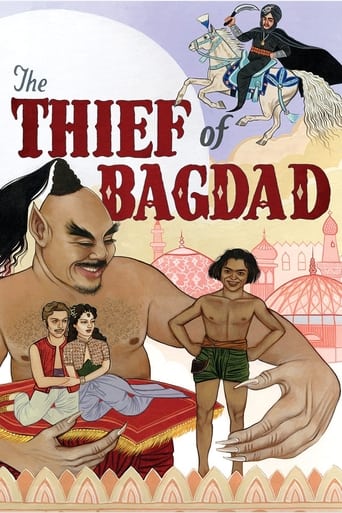The Sea Hawk (1940)
Dashing pirate Geoffrey Thorpe plunders Spanish ships for Queen Elizabeth I and falls in love with Dona Maria, a beautiful Spanish royal he captures.
Watch Trailer
Cast


Similar titles
Reviews
I have long been a fan of the pictures that Warner Brothers put out in the 1930s and '40s, as well as a longtime fan of Tasmanian-born actor Errol Flynn, of Hungarian director Michael Curtiz, and of the genre of film known as the swashbuckler, so it was perhaps inevitable that 1940's "The Sea Hawk" should wind up on my personal Top 10 list. But it is perhaps strange that I should rank this particular swashbuckler so very high, when so many others have topped it in various departments. Flynn's breakthrough film, the swashbuckler "Captain Blood" (1936), was there first, and features a short but very sweet beachside sword fight between Flynn and Basil Rathbone; "The Adventures of Robin Hood" (1938), also starring Flynn, is one of the most gorgeously filmed Technicolor movies ever made ("The Sea Hawk" was shot in B&W) and also features one of the greatest sword fights in cinema history, that between Flynn and Rathbone at the picture's conclusion; "The Mark of Zorro" (1940) also sports one of the finest sword fights of all time, that between star Tyrone Power and, still again, villainous Basil Rathbone; and "Scaramouche" (1952) gave us what is most likely THE very greatest (and lengthiest) sword fight in film history, a truly acrobatic and swinging affair between star Stewart Granger and villainous Mel Ferrer. (And by the way, I am using the term "sword fight" here generically, with full knowledge that many of these bouts were between two men fencing with rapiers or foils.) But for this viewer, "The Sea Hawk" remains the greatest swashbuckler of them all; a film in which all the elements come together to create one truly rousing and memorable film experience. After having been produced by the Warners studio at a cost of $1.7 million, the picture opened on July 1, 1940 and proved modestly successful at the box office, ultimately raking in $2.6 million. Based on Rafael Sabatini's 1915 novel "The Sea Hawk," the picture was actually a remake; the 1924 silent film, which I have also seen and enjoyed, supposedly hews a lot closer to the novel than does the Curtiz production, which uses as its model the exploits of the British sailor Sir Francis Drake. Personally, I have seen the 1940 film several dozen times and never seem to tire of it. I have seen it on both the small screen at home and on the large screen theatrically, and it never fails to leave this viewer with a happy grin on his face by the closing credits. Now almost 80 years old, it would seem to be a film for the ages."The Sea Hawk" takes place during the reign of Elizabeth I, a time during which the Spaniards were getting their famous armada together to wage war; in other words, just prior to the year 1588. As the film opens, the Spanish king, Philip II, sends his ambassador Don Alvarez (the always-wonderful character actor Claude Rains) to England, accompanied by his niece, Dona Maria (Brenda Marshall), to convince Elizabeth that Spain has no hostile intentions as regards any of its neighbors. While en route, the ambassador's ship is captured by the Albatross, under the command of privateer Geoffrey Thorpe (our Errol), and Alvarez and his niece are taken prisoners. Back in England, Elizabeth (truly regally portrayed here by Flora Robson, who was 38 at the time and here portraying a monarch who would have been, in 1588, 55 years old) publicly chastises Thorpe for his actions, but privately commends his deeds and valor on behalf of England. Thorpe is later given a rather hazardous assignment: to take his ship to the isthmus of Panama, in the New World, and capture a Spanish gold caravan that will soon be traveling there. And all would have gone well with this mission, had not traitorous Lord Wolfingham (the always hissable Henry Daniell) tipped the Spaniards off in advance. Thorpe and his men are ambushed in the swamps of Panama and many of them are killed; the few who remain are shipped back to Spain, stand trial under the Inquisition, and are sentenced to live out the rest of their lives as galley slaves aboard a Spanish galleon. Can Thorpe and his fellows ever escape from their rowers' shackles, make it back to England, and convince the queen of Spain's real intentions?"The Sea Hawk" was the 10th film that Curtiz and Flynn collaborated on together, and by now, the team was working like a well-calibrated machine. Besides "Captain Blood" and "The Adventures of Robin Hood," those previous films had been "The Charge of the Light Brigade"; the Westerns "Dodge City," "Santa Fe Trail" and "Virginia City"; the swashbuckler "The Private Lives of Elizabeth and Essex," in which Bette Davis essayed the role of Elizabeth (a very different interpretation of the role as compared to Robson's); and even lighthearted comedies such as "The Perfect Specimen" and "Four's a Crowd." Curtiz really makes his film move here, and nobody, for my money, has ever excelled Flynn in this type of role. The director and actor are abetted by the Warners studio working at peak efficiency, and aided by a raft of wonderful Warners character actors: Alan Hale, Donald Crisp, Una O'Connor, Gilbert Roland, Montagu Love, et al. And perhaps most especially by the great composer Erich Wolfgang Korngold, whose rousing and lusty score for this film, once heard, will never be forgotten. Korngold had previously contributed the scores for "Captain Blood," "Adventures of Robin Hood" and "Private Lives...," but his work here is truly spectacular. Finely shot by DOP Sol Polito, featuring sumptuous sets, and boasting a sparkling screenplay by Howard Koch and Seton I. Miller, "The Sea Hawk" is a class production all around. It is perhaps most famous today for the inspirational speech that Elizabeth makes toward the film's conclusion, in which she forcefully declaims the necessity of a country and her people to fight for their freedom; a speech that was seen as a Hollywood message to our British allies overseas during the early days of WW2. It is a film that really cannot be bettered, I feel...unless it would be to substitute Brenda Marshall with Olivia de Havilland, Flynn's frequent costar. But having a different leading lady play opposite the great Flynn for a change can hardly be seen as a bad thing, and Marshall surely does possess a unique charm of her own.On a personal note, there is one scene in "The Sea Hawk" that is an especial favorite of mine, and that I think back on frequently. It is the scene in which Thorpe and his men escape from their shackles and take over the Spanish galleon, a truly thrilling sequence indeed. By this time, the English slaves are in a pretty sorry state, dirty and worn out from their incessant, backbreaking toil. They are as abject a lot as can be imagined. But after they capture the ship, and put their Spanish tormentors belowdecks, they turn around and set sail for England, doing the same backbreaking work, but now joyful and singing lustily as can be, the great Korngold theme bellowing from their throats. The same exact work, but under different circumstances. That really strikes a chord with yours truly. As a proofreader and copy editor, I often sit at my office desk and read the most egregiously awful dreck all day long. And come evening, I often go home and...do what? Read! But now I am reading what I want to read, and what a difference it makes! Freedom is the difference, of course; the freedom to be doing what you want to be doing. And that message has never been shown more effectively than in that wonderful scene in "The Sea Hawk."It has just struck me that I have yet to mention the climactic sword fight that caps the action in this very fine film...that between Flynn and Daniell. While perhaps not as memorable as that of some of the others mentioned above, it is yet a highly satisfying affair, bringing to a close a film that should manage to charm and entertain audiences of all ages. If you have never had the pleasure of seeing this film, I would urge you to put it at the very top of your list. Personally, after not having seen it for a good number of years, I find that I am now hankering for another good solid dose of Geoffrey Thorpe & Co....
NOTES: Originally it was intended to remake the 1924 version of Sabatini's novel. Delmer Daves prepared a script. However, this idea was scrapped. Instead an original screenplay, "Beggars of the Sea", by Seton I. Miller, revised by Howard Koch, was used. (This was Koch's first screenplay. He had signed with Warners on the strength of his sensational radio script for "War of the Worlds".)In the climactic sword duel, Flynn was doubled by Don Turner and Henry Daniell by both Ned Davenport and Ralph Faulkner. Negative cost: $1,700,000. Shooting commenced 1 February 1940 and took 68 days (20 behind schedule), finishing 19 April 1940.Nominated for the following Academy Awards: Art Direction (black-and-white), Sound, Music Score, and Special Effects. (These awards were respectively won by Pride and Prejudice, Strike Up the Band, Tin Pan Alley and The Thief of Bagdad.)COMMENT: Arguably the best of Flynn's swashbucklers, The Sea Hawk is an ingratiatingly acted, superbly paced and marvelously expensive tale, embellished by Curtiz's forceful direction, Polito's stunning photography and Korngold's rousing, welcomely intrusive score. Money has been spent like pirate gold on extras, costumes and sets. Even without knowing the budget, it's obvious the film has been realized with enormous care and craftsmanship.Flynn makes a gentlemanly Thorpe. His scenes with Robson have an unusual and special flavor, a delightful parrying which producer Wallis did not appreciate because these lines were adlibbed by Koch, Flynn and Curtiz on the set. Wallis hated tinkering with the script and also tried to hold back the director's constant attentions to the fight and action scenes. In both respects, he was unsuccessful. Curtiz's varied camera set-ups with their strikingly in-depth compositions and his dramatically inventive angles (the thrilling overhead pan along the deserted ship as Flynn and his buckos climb back aboard) lend the whole film a wonderful atmosphere of high-spirited derring-do and romantic excitement.Fortunately the love interest doesn't get in the way of the lavishly-staged action. No wonder Olivia de Havilland turned the part down! Newcomer Brenda Marshall (she had made only one previous film: Espionage Agent) was assigned. She's capable enough but lacks charisma and color. Nonetheless, this role was probably the high point of her career. (In real life, she married William Holden in 1941, retired from pictures in 1943, made a brief comeback in 1949 and 1950.)Due to Curtiz's skill, none of the film's production problems show up on the screen. Henry Daniell was reportedly "absolutely helpless" with a sword. He is obviously doubled in the long shots, but the close-ups are quite effective and that is Flynn himself the double is often dueling! With that sonorously evil voice of his, Daniell really makes a marvelous villain, completely wiping the floor with poor old Donald Crisp (whose part is pretty small to boot). His co-conspirator, the satanically costumed Claude Rains, also has a high time, while Francis McDonald likewise shines as a properly slimy henchman.Alan Hale and Una O'Connor reprise their usual sidekick roles, William Lundigan (later to become a rather dreary if minor leading man) is reasonably effective in a small spot as one of Thorpe's crew (a group which includes a meatier characterization for J.M. Kerrigan and a surprisingly piddling bit for Edgar Buchanan). Gilbert Roland's role is also not over-large, though it's important enough to give us a sense of disappointment that his acting is slightly wooden. Among the character players, Halliwell Hobbes and particularly Alec Craig deserve our full admiration.It's interesting that some of the cleverly effective directorial touches we remember from the film (the close-up of the spinning globe with Hobbes' voice off-camera) turn out from an examination of the written screenplay to be Koch's devices not Curtiz's. Yet Curtiz alone embell¬ished the scene on the deserted ship with that stunningly dramatic overhead shot. What is more, Curtiz (and Korngold) have given the whole scene much greater atmosphere (and length). Our only complaint with his direction is that very occasionally he falls back on old-fashioned tricks like speeding up the action by under-cranking the camera. These obvious lurks date the film and actually lessen its impact. Fortunately, there are few of them. The miniature ships are maybe just a tiny bit obvious too, though quick cutting helps their disguise. A few snips of "old" stock footage are also thrown into relief by Polito's superbly contrasted "new" photography.Quibbles aside, The Sea Hawk is one of the great sea-sword-and-cannon entertainments of the cinema. Basil Rathbone fans were naturally disappointed their champion (who was incidentally first choice for the role) somehow missed out on Wolfingham, but Daniell's impersonation in my opinion is equally enthralling. As for the broodingly atmospheric sets, the edge-of-the-seat film editing (e.g. the intricate intercutting between Marshall and Flynn in the sequence in which she misses the sailing of "The Albatross"), and the dazzling panache of Curtiz's direction, who would deny (or forego) such excitement? The Sea Hawk's appeal is the same as Robin Hood's or Captain Blood's: White is right. The dashing spirit of romance and adventure is seen to triumph splendidly over all the machinations of enemy and fate.Acted with enthusiasm and realized on the grandest of scales, The Sea Hawk is a masterpiece of cinematic enchantment.
. . . requires a different skill set than winning a beauty pageant. Helen Mirren is typecast as the present Queen Elizabeth, and Cate Blanchett made her career playing the first one. Michelle Pfeiffer has not portrayed either Elizabeth on screen. Ms. Blanchett has been cast as Bob Dylan, and I think that Ms. Mirren played a dude in RED or RED 2. Flora Robson certainly fits the mannish Elizabethan mold as the British monarch in THE SEA HAWK. One of the few facts about QEI that I remember from my school days is that she died NOT with her boots on, but with an INCH of make-up caked up over the decades on her face. Since the current queen has now lived far longer than her namesake, getting up close and personal with her is quite a frightening thought. One of the main things I've learned about English law and cuisine is that only the queen can eat swans. I see swans daily near my home, and more often than not, I half expect to see QEII emerge from the bushes and come running after them with a bib tied around her neck, fork and knife in hand!
This is yet another vintage film that I'm only just catching up with, some 70 years after its initial release and this probably has a lot to do with how indifferent I feel about it. Whilst I've always found Errol Flynn charming with great charisma I sensed a strain on both here. Brenda Marshall is wooden in the extreme and there is absolutely no chemistry between her and Flynn. Claude Rains, too, seems oddly ill-at-ease possibly because unlike his Captain Renault in Casablanca he is not permitted to display the impish side of his character and come on as more of a lovable rogue than black-as-night villain. Even the swordplay was lacklustre and it's too easy to say that Henry Daniell is a poor substitute for Basil Rathbone. I've given it five out of ten whereas had I seen it earlier I may have gone to seven or eight.

